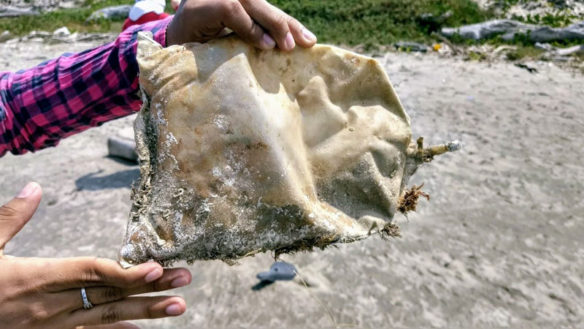
This picture taken in Salinas del Rey beach (Caribbean coast of Colombia) is a good example of how litter can be harmful to the environment in several ways.
A medical waste bag containing blood is a biohazard item that should not be found along any seashore due to its inherent nature and potentiality to spread infectious bloodborne pathogens.
Furthermore, this dangerous litter can also act as an enabler of biodiversity loss in our marine environment by allowing the invasion of local waters by non-indigenous species. Alien species such as bryozoan and polychaeta colonies, often use plastic litter in the ocean as a habitat on which to settle or as raft material for migrating into new territories, ultimately posing a threat to the integrity and functioning of ecosystems.
Captions and Photo courtesy of: ©-Nelson Guillermo Rangel Buitrago – Grupo de Geología, Geofísica y Procesos Marino-Costeros, Universidad del Atlántico Barranquilla, Atlántico, Colombia.
Excerpts;
People who swim, bathe or take part in water sports in the sea are substantially more likely to experience stomach bugs, ear aches and other types of illness than those who do not…
Read Full Article, Science daily (02-27-2018)
Cost of recreating in polluted water estimated at $2.9 billion nationwide! SurfRiders (01-24-2018)
MRSA: Bad Boy Bacteria, By Sharlene Pilkey (05-23-2010)
It used to be swimmers ear, (otis exterma,) and then it was swimmers itch (cercarial dermatitis) if you went to the beach, everybody got it at one time or another, but now there is a new bully bacteria hiding on supposedly pristine beaches world-wide…









